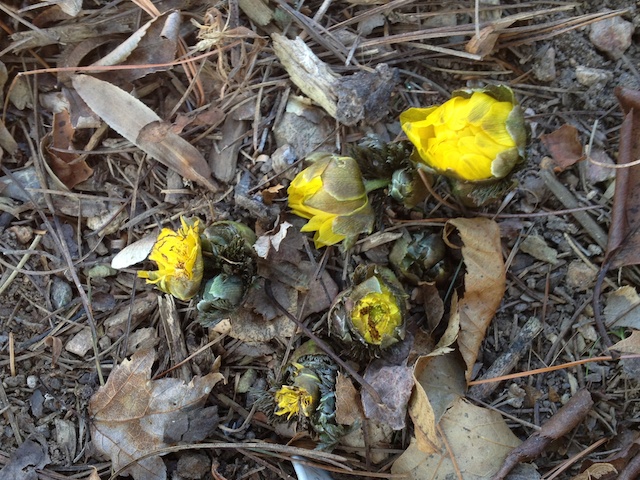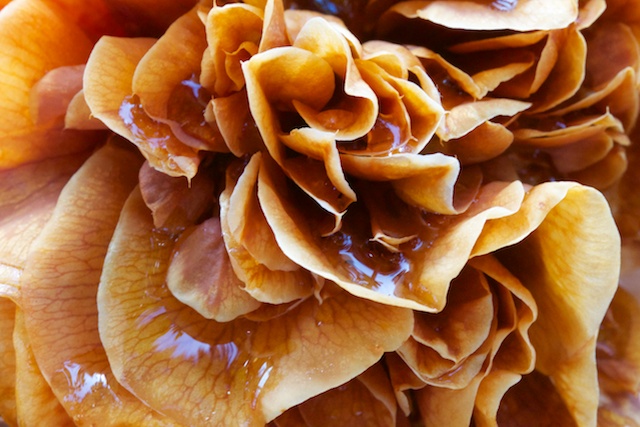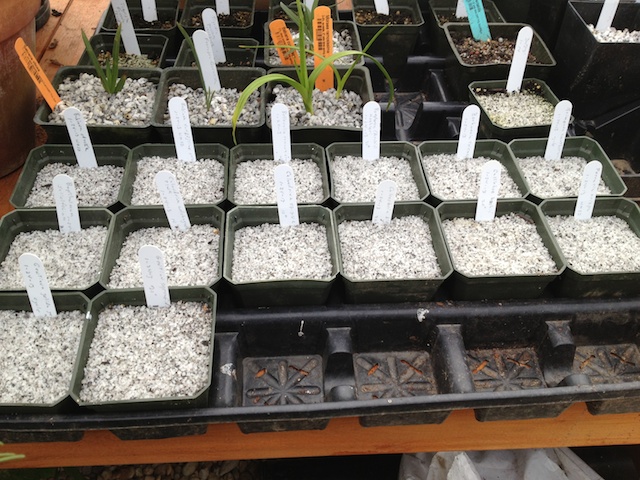We’ve just had a marvelous mid-sixties day as we closed out the cold spell that hit us for the end of January. Although temperatures down to the very low teens is not unexpected for January we have gotten terribly spoiled by the mild winters that have been our lot of late. We got jerked back to zone 7 reality with a week of very cold (for us anyway) weather, where temperatures hit a low of 12 degrees last Wednesday and then stayed bitterly cold through a couple of small snowstorms. The Adonis and Camellias were the main plants that had really jumped the gun with regard to bloom cycle so I wasn’t sure how they would handle the really cold weather. I ended up putting some leaves over the Adonis but I’m not sure that it was necessary. Although they were folded up and bent over during the worst of the cold, they seem to have been completely unfazed by the temperatures.
Note that the apparently burned off blossoms were there before the cold wave and were probably animal related damage (I hope that pest got a severe stomach ache as flowers in the ranuculus clan are generally pretty unappetizing). A heavy snow or ice could probably damage the blossoms but it seems that straight old cold temperatures are not a problem.
I can’t say the same for the double pink Camellia as all those blossoms are now brown instead of pink.
Hard to complain though. We’ve many weeks and many flowers from this Camellia already this year. The Camellia sasanqua was a little more colorful after the cold, but the blossoms are sort of like paper maché. They don’t have their normal softness.
I used the warm weather to get a load of compost from the local landfill and start on some of the spring chores.
It was literally tee-shirt weather so I began building up the area where a tree fell down during Sandy. I expect we will want to do more gardening in that area since the light will be improved and there will be fewer pine roots to compete with.
Last Friday I had gone with a friend down to Behnke’s nursery in Beltsville, Maryland to help with the North American Rock Garden Society seed exchange process. It was interesting to see how organized one has to be to distribute 3500 different kinds of seeds to 750 people around the world.
Later I received and planted my own set of seeds received from NARGS and from the Scottish Rock Garden Club.
Many of these seeds are quite challenging to grow but that’s part of what makes it interesting.










I am not sure how I have missed your blog, but I am thrilled that I found it! Thanks for showing the NARGS seed exchange and how it actually looks when it is in the fulfillment process – what a job. And those Adonis are incredible, I only wish mine survived being dug up by the dog. I’m going to add you to my blogroll, since it looks like I have a lot of catching up to do.